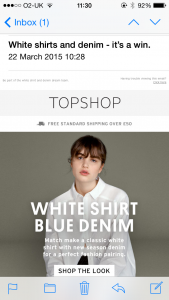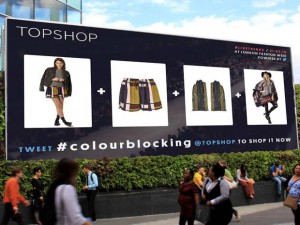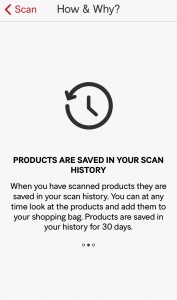The next time you open your email, and 90% (Lacy, 2012) of us do this every day, consider what happens to those marketing emails you receive from your favourite retailers. Do they head straight to the bin or are they a great way to keep in touch with the latest offers?
From the retailers’ perspective the advantages of sending marketing emails may seem obvious (Chaffey & Ellis-Chadwick, 2012) and typically include;
- Low cost – substantially less than direct mail.
- They encourage immediate action – customers are able to click through to the website for an immediate purchase.
- Faster campaign deployment – great for fashion retailers where speed is of the essence.
- Personalisation – it is easier and cheaper to personalise e-mail than for physical media or on a website.
- Monitoring – measuring success is everything when been able to justify any advertising strategy and email open-rates, click rates and completed sales are all quantifiable.
The current Topshop campaign is a current example of email marketing; it’s a personalised email offering the easy purchase of the look of the moment with no need to shop beyond the email click-through. Even if no purchase is made the retailer maintains a good customer relationship.
So how does a fashion retailer make its emails stand out when over 800bn marketing emails are sent each year (Forrester Research, 2014) and only around 19% of these emails ever get opened? (Chaffey, 2015)
According to research there are key rules to follow when compiling a marketing email:
- Make the subject line punchy and attention grabbing, e.g. ‘Offer ends soon’ make the recipient feel they need to take action now.
- Keep it brief, too many words is a turn-off. Have a visual message with the option to click-through.
- The email needs to be mobile compatible, 48% of emails are opened on mobile devices (Litmus, 2014).
- When to send? – Marrs (2014) argues the best time to send emails is during the daytime when for most people they have most time to check emails. Weekends and Mondays are often avoided as people have personal lives to live and well, no one likes Mondays! However there is no universal agreement on this question with some preferring early evenings when the recipient has more time to relax and check emails.
Email will remain an effective marketing tool to be used alongside other social media channels as long as it proves a cost effective way of reaching a target audience. Industry average click rates may seem low at less than 5% but a retailer able to create interesting content and increase click rates to just 7% will see massive returns on high volume email campaigns and with a target audience of over 3.9bn email accounts (Radicati, 2014) this has to be the optimum goal.
REFERENCES
- Lacy, K. 2012. 91% of Consumers Use Email At Least Daily, Salesforce marketing cloud (online) Accessed: 29th march 2015 Available at: http://www.exacttarget.com/blog/91-of-consumers-use-email-at-least-daily/
- Chaffey, D. and Ellis-Chadwick. 2012. Digital Marketing – Strategy, Implementation and Practice. Harlow: Pearson
- Forrester. 2008. US Email Marketing Volume Forecast, 2008 To 2013 (online) Accessed: 29th march 2015 Available at:https://www.forrester.com/US+Email+Marketing+Volume+Forecast+2008+To+2013/fulltext/-/E-RES43542
- Jordan, J. 2013. 48% of Emails are Opened on Mobile; Gmail Opens Down 20% Since Tabs. Litmus (online) Accessed: 30th march 2015 Available at: https://litmus.com/blog/48-of-emails-are-opened-on-mobile-gmail-opens-down-20-since-tabs
- Marrs, M. 2014. Perfect Timing: The Very Best Time to Send Email Newsletters. WordStream (online) Accessed: 30th march 2015 Available at: http://www.wordstream.com/blog/ws/2014/09/04/best-time-to-send-email-campaign
- The Radicati Group. 2013. Email Statistics Report (online) Accessed: 30th march 2015 Available at: http://www.radicati.com/wp/wp-content/uploads/2013/04/Email-Statistics-Report-2013-2017-Executive-Summary.pdf
- Chaffey, D. 2015. Email Marketing Statistics 2015. Smart Insights (online) Accessed: 30th march 2015 Available at: http://www.smartinsights.com/email-marketing/email-communications-strategy/statistics-sources-for-email-marketing/






